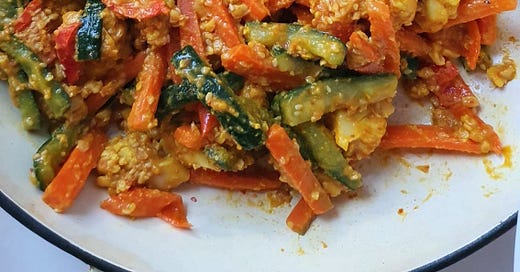Achar
I’m starting the year with pickles, more specifically achar, a condiment that would be familiar to anyone living in Singapore. While achar is a catch-all term for pickles in India, the image that springs to mind for most Singaporeans is specific: an over-the-top, sunset-yellow pickle laced with chillies, turmeric, and crushed peanuts. Ordinary vegetables are transformed into something grand; the word ‘pickle’ does not do it justice. Those of Peranakan descent might have memories of them being made and served out of kamchengs (brightly coloured and lidded pots fashioned out of porcelain). Homemade achar is so cherished that jars of it are given away on festive occasions. For those of us who aren’t lucky enough to have grown up in a family where achar-making is the norm, we might have come across them as a side dish accompanying rendang or biryani, or served as a nibble at Chinese eateries.
Achar-making is a real art. I never bothered making it because it seemed like a lot of work. But when I was living in Melbourne, I encountered a kueh pie tee starter at one of the city’s finest restaurants, Sunda. Each gossamer-thin, thimble-sized pastry cup was filled midway with savoury custard, and topped with what was listed on the menu as ‘salted vegetables’. It had a crunch and moreish flavour profile that reminded me of achar, and awakened an interest to make my own. For something as beloved as achar, there is surprisingly little technical information online and a befuddling array of methods, but all recipes have the general steps in common:
Preparing the vegetables for maximum crunch.
Blanching the vegetables to remove their raw edge.
Tossing in a highly seasoned mixture of rempah, acid, sugar, and salt. This flavours the pickle and gives it its trademark colour.
Adding texture by way of ground peanuts and sesame seeds.
Ageing the pickle for the flavours to meld.
Prepping vegetables for maximum crunch
Most pickle recipes are developed with an eye towards preservation; by that logic, almost any vegetable would be suitable for achar. The vegetables most used for achar are cauliflower, carrots, cabbage, beans, and cucumber, but you can also add aromatics such as sliced chillies, garlic, and tiny shallot bulbs. Pineapple is also delicious in an achar, though they tend to be added right before eating. Whatever vegetable you’re using, cut them into uniform batons, wedges, or bite-sized pieces - being fastidious about this serves an aesthetic purpose, but also ensures even blanching and an improved eating experience.

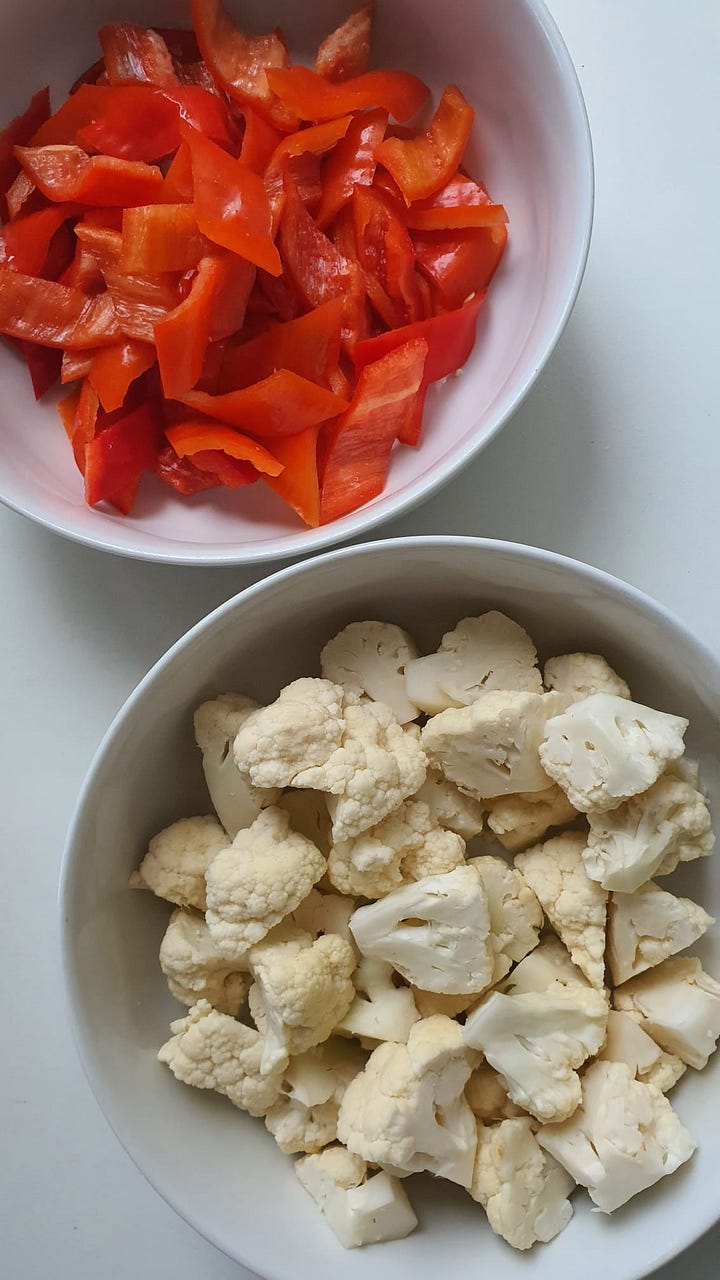
Accentuating the inherent crunch of the vegetables is the key to good achar. This can be accomplished in a myriad of ways:
Soaking vegetables in water with dissolved slaked lime paste or powder.
Salting and sun-drying the vegetables until they are “dry to the touch and just slightly shrivelled”. Alex Chua, the Peranakan owner of one of Singapore’s newest bookstores Book Bar, tells me that his grandma used to leave the vegetables out in the sun for at least two days. One could also use a warm oven, if sunlight is a precious commodity where you live. When I was working at Candlenut, a dehydrator was used.
Salting and leaving the vegetables overnight on a tray in the refrigerator.
Simply salting the vegetables.
I feel nervous about leaving vegetables out in the open (birds can be aggressive), and fridge space is a luxury in my home. I find salting the vegetables sufficient to produce the crunch that I desire. The key to a superior crunch seems to be draining the vegetables, wrapping them in cloth (I use a coffee sock for this), then squeezing the vegetables really well, in small batches, to wring out the moisture. You’ll be surprised at how much water comes out of the vegetables even after they have been drained. They should appear discernibly wilted.
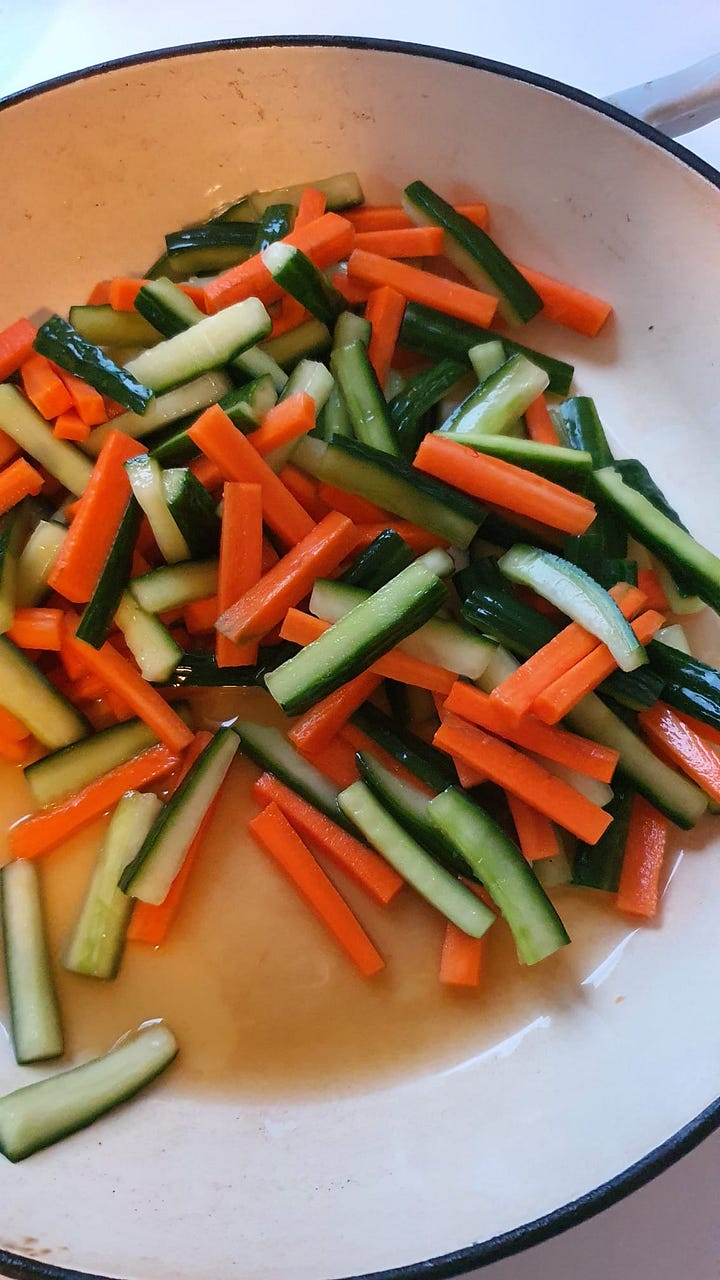
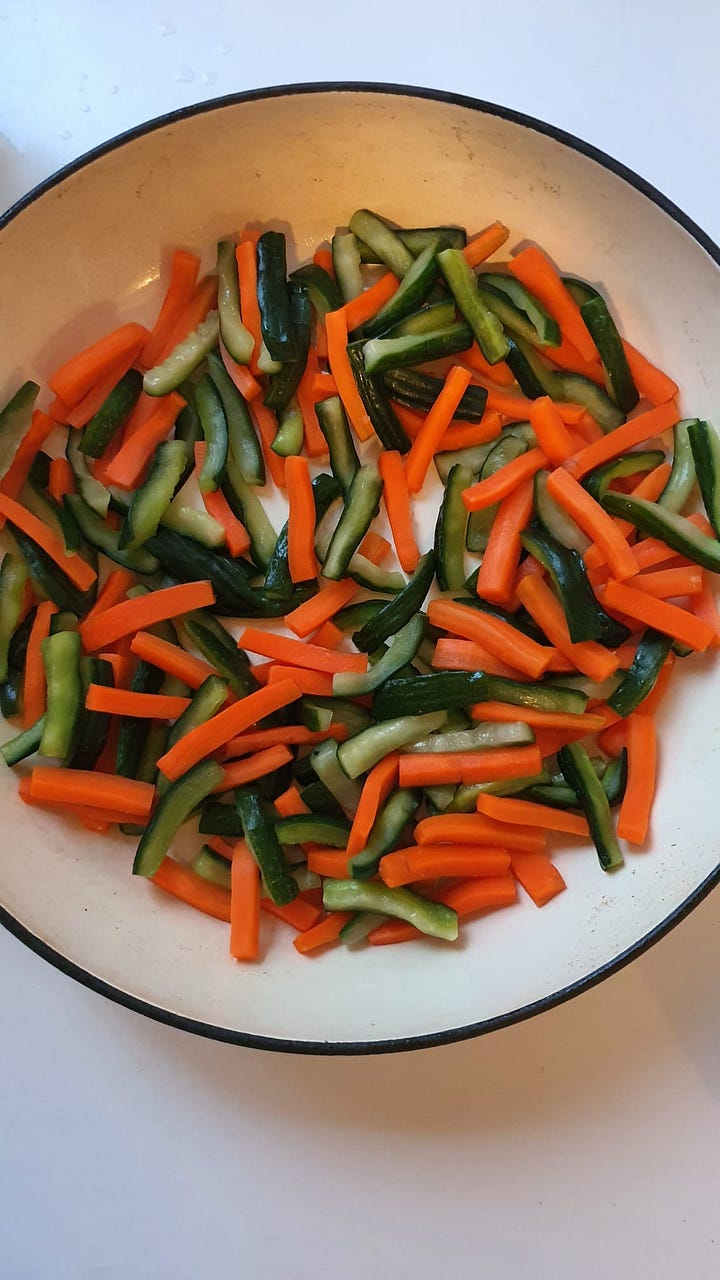
Blanching the vegetables
While juicier fruit and vegetables are delicious eaten raw in a pickle, sturdier ones such as cauliflower, cabbage, and beans should be cooked. There are some recipes that blanch the vegetables in pure vinegar; I find the end result too bitingly acidic and prefer to use a dilute mixture. The point is not to cook the vegetables through but to cook them just enough to take off their raw edge. The vinegar in the water also helps to preserve them, so the pickle can be kept for a longer time. To maintain the crunch of the vegetables, it is imperative that the vinegar must be brought back to a boil before adding a new batch of vegetables. Once cool, like the carrot and cucumber, the vegetables are squeezed in a cloth to remove excess moisture, so as to not dilute the seasoning mixture.


Tossing in a highly seasoned mixture
The firepower of an achar comes from a fried rempah. With the addition of standard pickle seasonings of acid, sugar, and salt, the mixture simultaneously cures, flavours, and preserves the vegetables. If you don’t want to go to the trouble of making your own rempah, an easy workaround is to use store-bought sambal tumis - look for sambal that is a terracotta shade of red, and tastes caramelised and mellow. Have a look at the ingredient list - if turmeric is not listed as an ingredient, warm some turmeric powder in the sambal, or the achar will not have its characteristic sunset glow. Whatever you use, make sure that everything is cool before you add it to the vegetables so that they don’t overcook and lose their crunch.

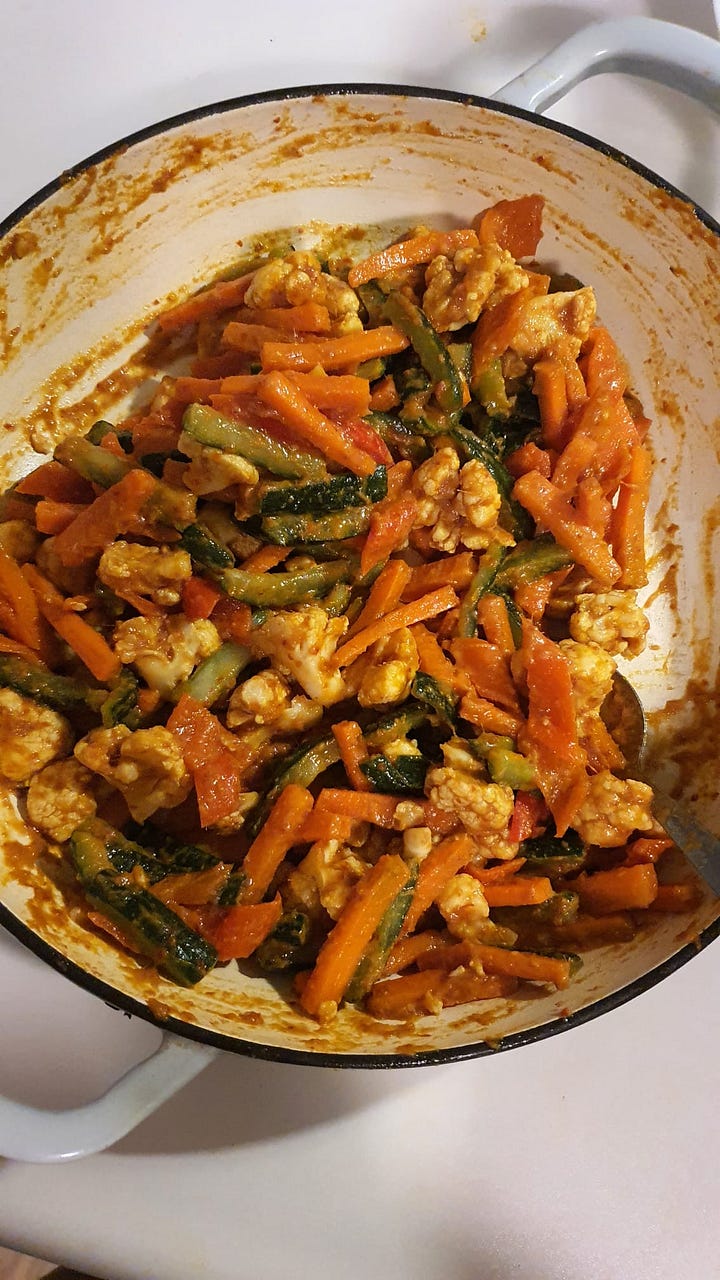
Adding texture and ageing the pickle
A blizzard of toasted sesame seeds and roasted peanuts is added for texture. I purchase roasted peanuts from the supermarket and grind them by hand; if you own a pestle and mortar, this is where it comes in handy. Once you’re done, store the mixture overnight to allow the flavours to meld. Taste and adjust the seasoning before serving. If sufficient moisture has been driven off from the vegetables, the crunch can be retained for weeks. Enjoy achar as a pickle or a piquant side dish that is good enough to eat with rice. It also happens to be vegan!
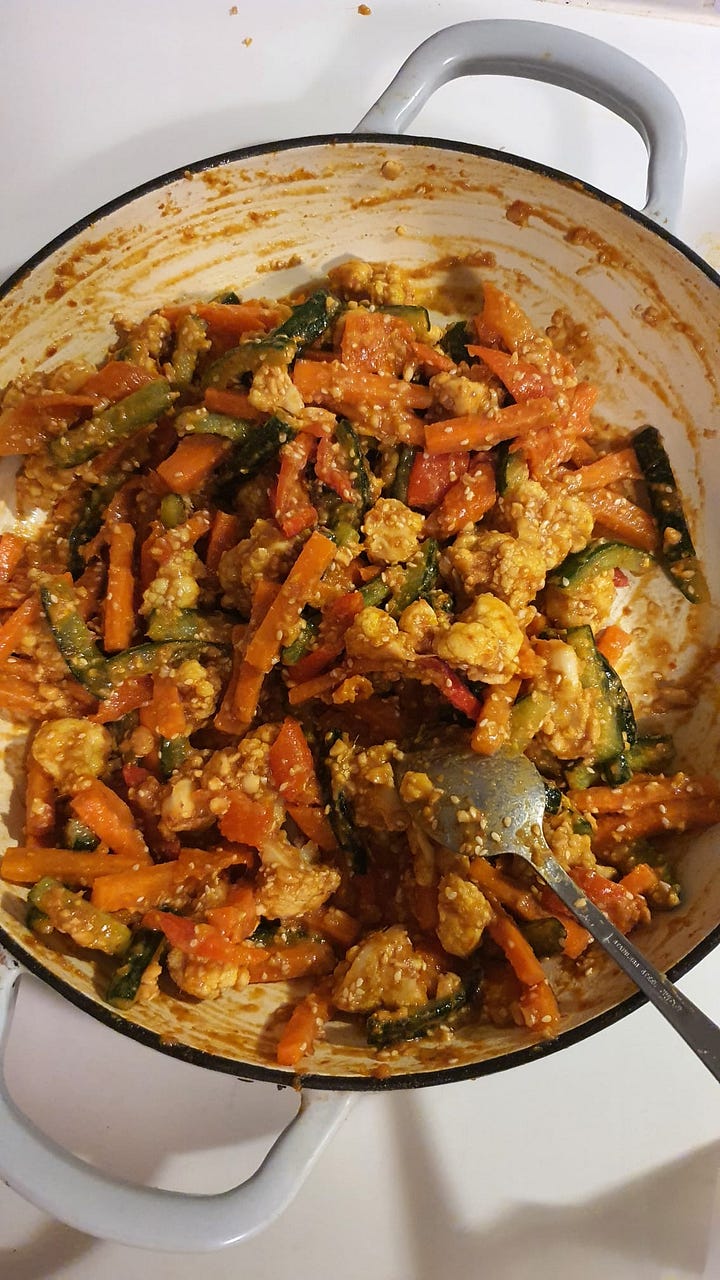

Achar
Serves 10-12

